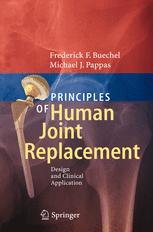

Most ebook files are in PDF format, so you can easily read them using various software such as Foxit Reader or directly on the Google Chrome browser.
Some ebook files are released by publishers in other formats such as .awz, .mobi, .epub, .fb2, etc. You may need to install specific software to read these formats on mobile/PC, such as Calibre.
Please read the tutorial at this link: https://ebookbell.com/faq
We offer FREE conversion to the popular formats you request; however, this may take some time. Therefore, right after payment, please email us, and we will try to provide the service as quickly as possible.
For some exceptional file formats or broken links (if any), please refrain from opening any disputes. Instead, email us first, and we will try to assist within a maximum of 6 hours.
EbookBell Team

4.4
82 reviewsDrs. Buechel, an orthopaedic surgeon, and Pappas, a professor of Mechanical Engineering, are the designers of several successful joint replacement systems. The most well-known of these is the pioneering LCS knee replacement. They have written this book for the users and designers of joint replacements. It is an attempt to convey to the reader the knowledge accumulated by the authors during their thirty five year effort on the development of replacement devices for the lower limb for the purpose of aiding the reader in their design and evaluation of joint replacement devices.
The early chapters describe the engineering, scientific and medical principles needed for replacement joint evaluation. One must understand the nature and performance of the materials involved and their characteristics in vivo, i.e. the response of the body to implant materials. It is also essential to understand the response of the implants to applied loading and motion, particularly in the hostile physiological environment. A chapter describes the design methodology now required for joint replacement in the USA and EU countries. The remaining chapters provide a history of joint replacement, an evaluation of earlier and current devices and description of the design rationale for some of the authors devices with which the authors are, of course, quite familiar.